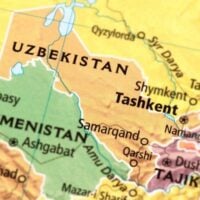Deadline: 5 June 2020
The Healthy Communities Grant Program is EPA New England’s main competitive grant program to work directly with communities to support EPA’s “Back-to-Basics” agenda to reduce environmental risks, protect and improve human health and improve the quality of life.
The Healthy Communities Grant Program will achieve this through identifying and funding projects that:
- Target resources to benefit communities at risk [areas needing to create community resilience, environmental justice areas of potential concern, sensitive populations (e.g. children, elderly, tribes, urban and rural residents, and others at increased risk)].
- Assess, understand, and reduce environmental and human health risks.
- Increase collaboration through partnerships and community-based projects.
- Build institutional and community capacity to understand and solve environmental and human health problems.
- Advance emergency preparedness and ecosystem resilience.
- Achieve measurable environmental and human health benefits.
The mission of the U.S. Environmental Protection Agency is to protect human health and to safeguard the natural environment (air, water, and land) upon which life depends. EPA’s purpose is to ensure that:
- All Americans are protected from significant risks to human health and the environment where they live, learn and work.
- National efforts to reduce environmental risk are based on the best available scientific information.
- Federal laws protecting human health and the environment are enforced fairly and effectively.
- Environmental protection is an integral consideration in U.S. policies concerning natural resources, human health, economic growth, energy, transportation, agriculture, industry, and international trade, and these factors are similarly considered in establishing environmental policy.
- All parts of society (e.g., communities, individuals, business, state and local governments, tribal governments) have access to accurate information to effectively participate in managing human health and environmental risks.
- Environmental protection contributes to making our communities and ecosystems diverse, sustainable and economically productive.
- The United States plays a leadership role in working with other nations to protect the global environment.
Outcomes & Outputs
Outputs refer to measurable quantitative or qualitative activities, efforts, deliverables, or work products that the applicant proposes to undertake during the project period. The anticipated outputs for Healthy Communities Grant Program cooperative agreements will vary from applicant to applicant but will be identified as “Project Deliverables” in the proposal narrative and work plan. All applicants will be expected to clearly identify their outputs depending on the Target Program Area(s) selected by the applicant and achieve them during the proposed project period. Grant recipients will be required to submit quarterly status reports about their progress towards achieving outputs once the project is implemented.
The anticipated outputs for Healthy Communities projects will vary depending on the scope of the project and linkage to one or more Target Program Area(s). Anticipated outputs for potential projects are organized by Target Program Area below and may include, but are not limited to:
- Clean, Green and Healthy Schools
- Community and Water Infrastructure Resilience
- Energy Efficiency
- Healthy Indoor Environments
- Healthy Outdoor Environments
- Pollution Prevention
Funding Information
- Proposals may be submitted for amounts up to $35,000.
- The project period will start no earlier than October 1, 2020 and can last for a one or two-year period. Although the project can last up to two years, the total amount requested for federal resources cannot exceed the $35,000 limit.
Eligibility Criteria
In accordance with CFDA 66.110, eligible applicants for awards under this announcement include State and Local Governments, public nonprofit institutions/organizations, private nonprofit institutions/organizations, quasi-public nonprofit institutions/organizations, Federally Recognized Indian Tribal Governments, K-12 schools or school districts; and non-profit organizations (e.g., grassroots and/or community-based organizations). Applicants need not be physically located within the boundaries of the EPA regional office to be eligible to apply for funding, but must propose projects that affect the States, Tribes, and Territories within their Region. Private businesses, federal agencies, and individuals are not eligible to be grant recipients. However, they are encouraged to work in partnership with eligible applicants on projects.
For more information, visit https://www.grants.gov/web/grants/view-opportunity.html?oppId=326466









































